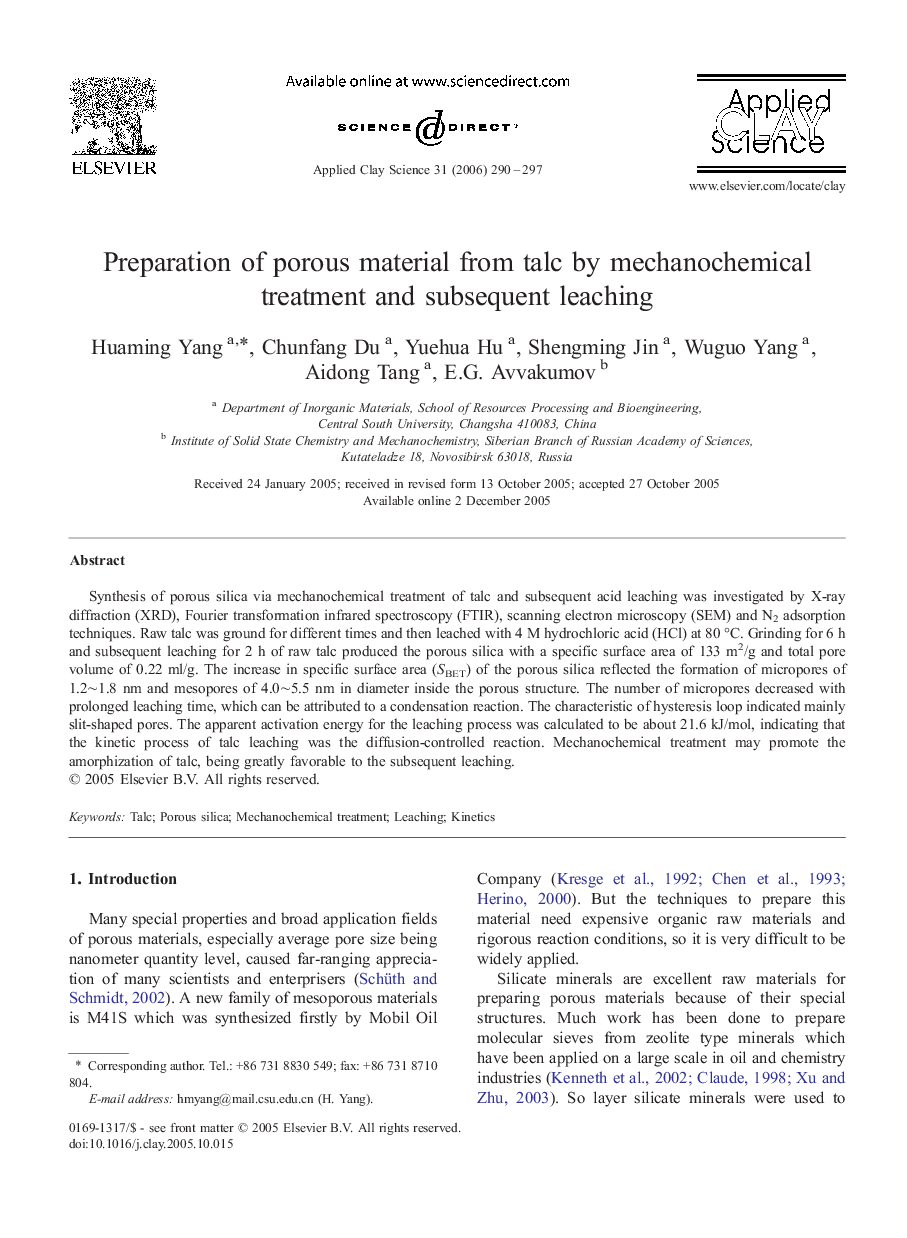| Article ID | Journal | Published Year | Pages | File Type |
|---|---|---|---|---|
| 1696695 | Applied Clay Science | 2006 | 8 Pages |
Synthesis of porous silica via mechanochemical treatment of talc and subsequent acid leaching was investigated by X-ray diffraction (XRD), Fourier transformation infrared spectroscopy (FTIR), scanning electron microscopy (SEM) and N2 adsorption techniques. Raw talc was ground for different times and then leached with 4 M hydrochloric acid (HCl) at 80 °C. Grinding for 6 h and subsequent leaching for 2 h of raw talc produced the porous silica with a specific surface area of 133 m2/g and total pore volume of 0.22 ml/g. The increase in specific surface area (SBET) of the porous silica reflected the formation of micropores of 1.2∼1.8 nm and mesopores of 4.0∼5.5 nm in diameter inside the porous structure. The number of micropores decreased with prolonged leaching time, which can be attributed to a condensation reaction. The characteristic of hysteresis loop indicated mainly slit-shaped pores. The apparent activation energy for the leaching process was calculated to be about 21.6 kJ/mol, indicating that the kinetic process of talc leaching was the diffusion-controlled reaction. Mechanochemical treatment may promote the amorphization of talc, being greatly favorable to the subsequent leaching.
